Southeast Asia, a region of unparalleled diversity, continues to captivate travelers with its remarkable blend of ancient traditions and bold modernity. This vibrant area offers unique, sustainable, and personalized experiences that are increasingly prioritized by travelers in 2025. The region’s enduring allure lies in its ability to provide a spectrum of adventures, whether one seeks secluded villas overlooking turquoise waters or intimate lodges hidden in verdant hills.
While this guide focuses on the top urban centers, it is important to acknowledge that Southeast Asia’s appeal extends significantly beyond its major cities. The region is also celebrated for its serene island retreats and lush tropical havens. For instance, top-ranked islands such as Palawan in the Philippines, Bali in Indonesia, and Phuket and Koh Samui in Thailand are highly favored by travelers. Additionally, emerging destinations like Sumba in Indonesia and Siargao in the Philippines are gaining considerable traction for their unspoiled natural beauty and abundant adventure opportunities.
Acknowledging this broader regional appeal sets a richer context for the reader, subtly suggesting that city exploration can be complemented by island getaways, thereby offering a more complete travel experience within the region. This approach positions the content as a holistic resource for regional travel, even with an primary focus on urban destinations.
This comprehensive guide curates a list of the top 10 cities to explore right now, based on current trends, expert recommendations from leading travel publications, and insights into traveler favorites. The aim is to delve into what makes each city a compelling destination, ensuring visitors are equipped with the most helpful and reliable information for their next unforgettable adventure.
Table of Contents
Bangkok, Thailand: The Enduring Metropolis
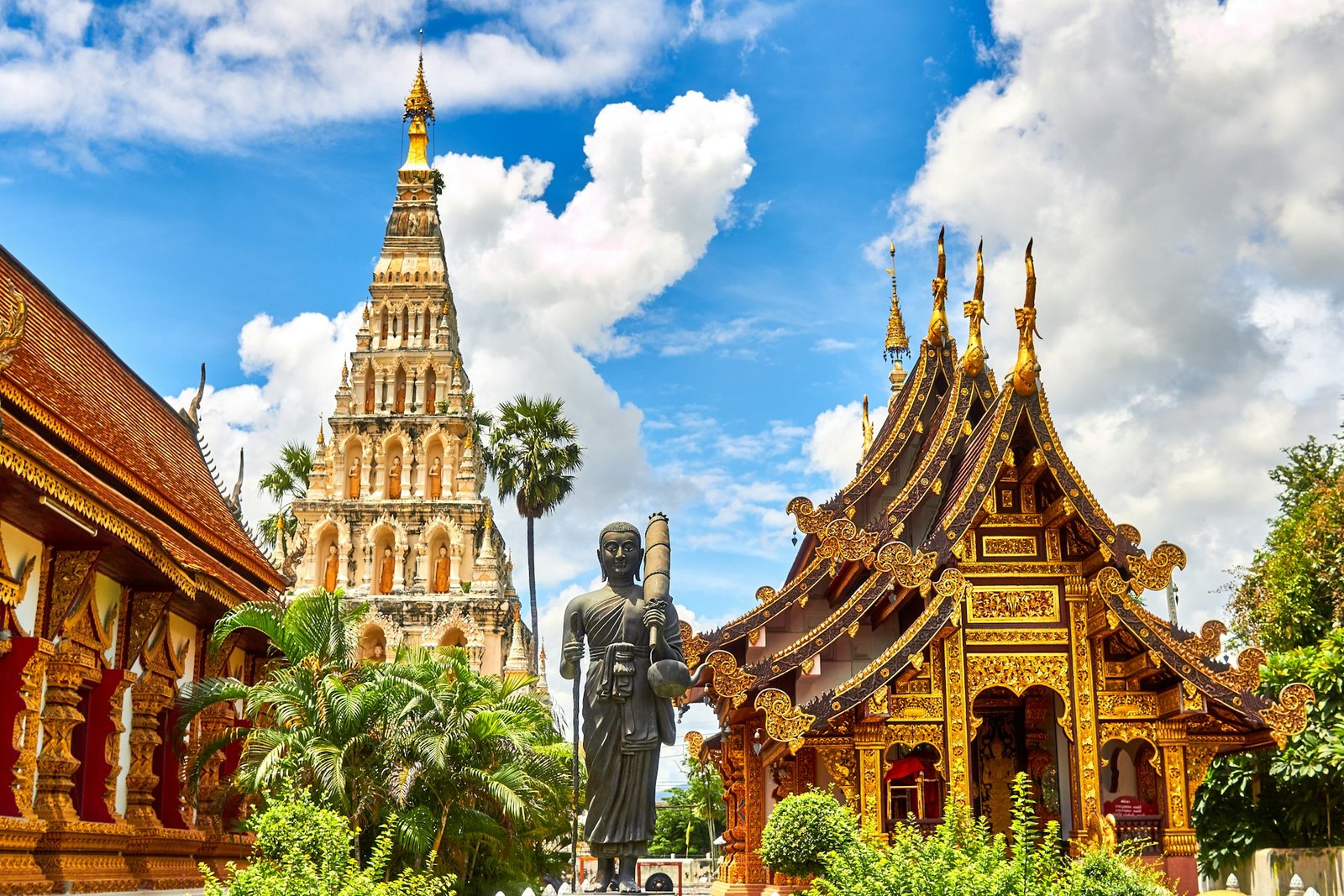
Bangkok remains a perennial top choice for its bustling street life, grand temples, historical landmarks, delicious food, and lively atmosphere. It offers a dynamic blend of traditional Thai culture and modern urban energy, making it a vibrant destination that consistently draws travelers. The city’s consistent ranking as a top destination and its enduring appeal are not due to a single factor but rather a direct consequence of its highly diverse and multifaceted offerings.
The city successfully caters to a wide array of traveler interests, from cultural immersion and historical exploration to culinary adventures, shopping, and modern technological conveniences. This broad spectrum of attractions means Bangkok appeals to various traveler segments simultaneously, allowing the city to adapt to evolving travel trends and ensuring a continuous influx of different types of visitors, directly leading to its sustained popularity and high rankings year after year.
One of Bangkok’s most iconic attractions is the Chatuchak Weekend Market, which is indeed considered the biggest market in Southeast Asia. This sprawling hub is recognized as one of the world’s largest and most diverse weekend markets, attracting over 200,000 visitors every weekend. It offers an unparalleled shopping and cultural immersion experience, where one can find virtually everything imaginable, from antiques and handicrafts to clothing and an incredible array of food. As a prime destination for food tourism, Bangkok boasts vibrant street food tours where visitors can savor typical dishes like Pad Thai and Mango Sticky Rice , solidifying its status as a culinary hotspot.
Beyond its markets and food, the city is home to magnificent cultural landmarks such as the Grand Palace and Wat Arun, which beautifully showcase Thailand’s rich heritage. Embracing modern trends, Bangkok is also at the forefront of tech tourism, with smart hotels becoming a new standard, offering automated check-in/check-out and voice-controlled devices to enhance the guest experience. Its widespread and sustained popularity is further underscored by its high regard among travelers, ranking as the third-best city in Asia for 2025 by Travel + Leisure readers.
Kuala Lumpur, Malaysia: Modernity Meets Cultural Richness
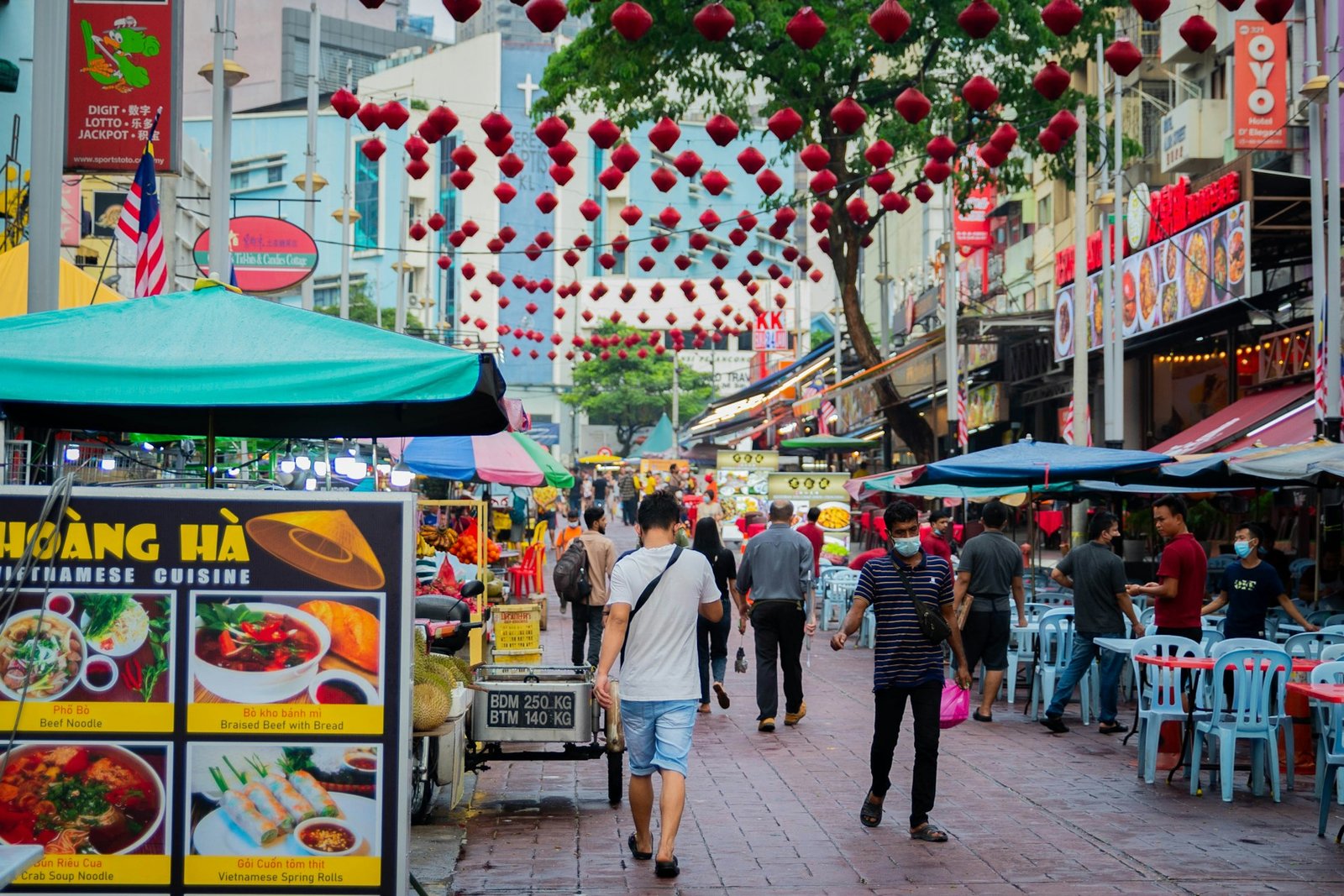
Kuala Lumpur, Malaysia’s vibrant capital, is renowned for its modern skyline, iconic Petronas Towers, diverse culture, and a delicious food scene, particularly its street food. It represents a dynamic blend of contemporary urban development and deep cultural roots. The city is experiencing a significant tourism boom, with Malaysia officially taking the lead as Southeast Asia’s most visited country in the first quarter of 2025, recording over 10.1 million international arrivals. This remarkable surge is largely boosted by strategic visa exemptions for Indian and Chinese travelers, extended until 2026 and 2036 respectively.
This proactive government policy, coupled with improved airport coordination and air connectivity, has made Malaysia, and by extension Kuala Lumpur, a particularly accessible and strategically important destination to visit right now. The direct and immediate correlation between Malaysia’s relaxed visa policies and its significant tourism growth in early 2025 is a clear cause-and-effect relationship. This strategic government intervention has not only fueled a surge in arrivals but has also positioned Malaysia (and its capital, Kuala Lumpur) as the leading tourism destination in Southeast Asia for early 2025, surpassing long-standing champions like Thailand.
The towering Petronas Twin Towers stand as an architectural marvel and a must-see landmark, offering breathtaking views of the city’s dynamic skyline. Other key attractions include the sacred Batu Caves and the lively districts of Bukit Bintang and Chinatown. Bukit Bintang itself is a major shopping and entertainment district, famous for its vibrant night markets and diverse retail offerings . Furthermore, Kuala Lumpur is embracing the trend of tech tourism, with smart hotels enhancing the guest experience through automated services and digital conveniences.
Singapore: The Futuristic Garden City with Deep Roots
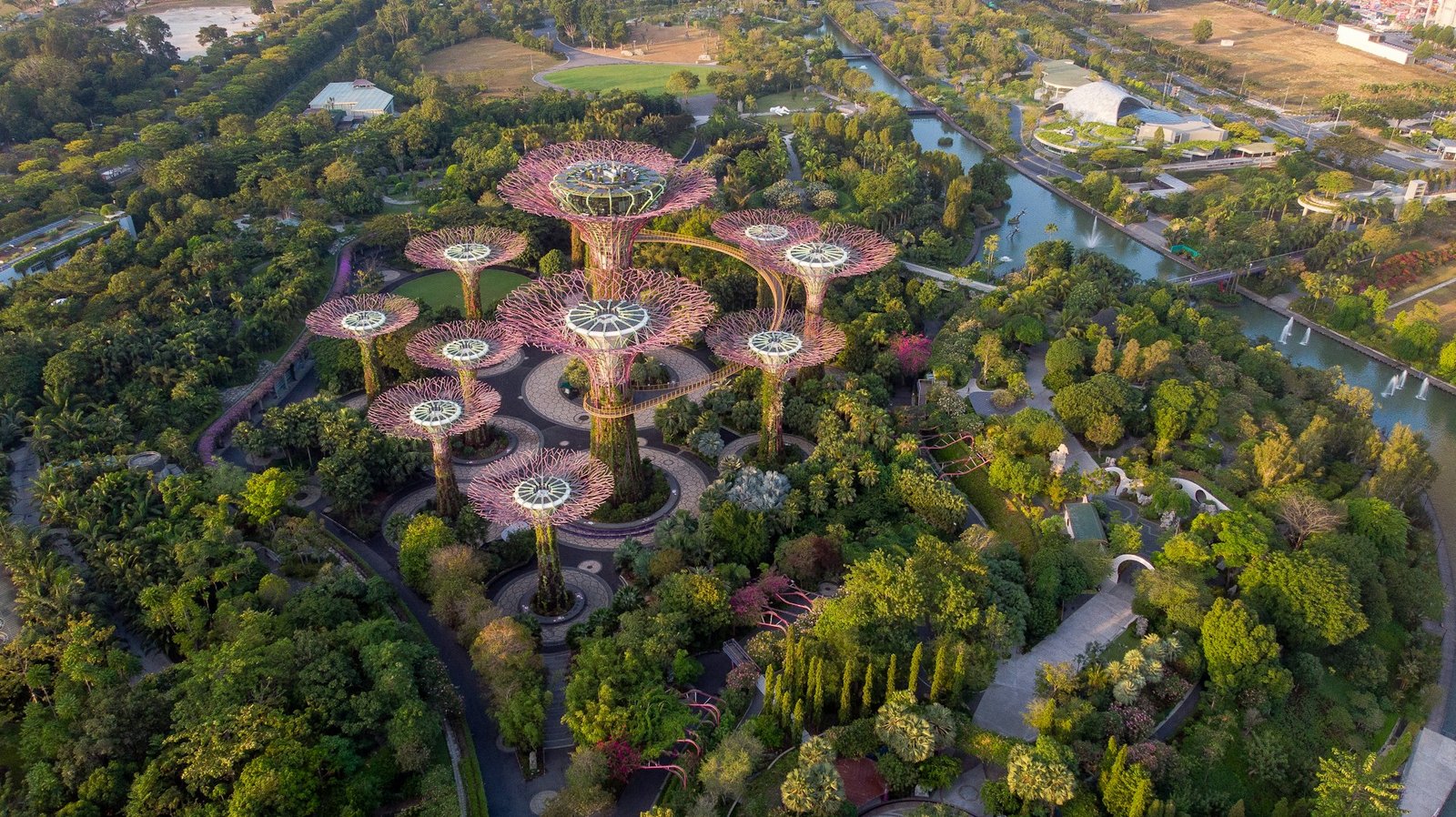
Singapore is a modern city-state celebrated for its futuristic attractions like Gardens by the Bay and Marina Bay Sands, while still retaining its rich cultural roots . It offers a unique blend of cutting-edge innovation and a commitment to preserving its heritage. Singapore boasts a world-class and diverse food scene, including excellent hawker centers . These bustling culinary hubs are landmarks, home to numerous Michelin Bib Gourmand and even Michelin-starred stalls, such as Liao Fan Hawker Chan at Chinatown Complex, renowned for its affordable soy sauce chicken rice. Maxwell Food Centre, home to Tian Tian Hainanese Chicken Rice, and Old Airport Road Food Centre are also highly recommended for authentic and accessible flavors.
Singapore exemplifies a unique pattern where high-quality, even Michelin-level, culinary experiences are incredibly accessible and affordable through its hawker centers. This challenges the conventional perception that gourmet dining must be expensive, making it a highly attractive destination for food tourism that caters to a wide range of budgets and appeals to a broad demographic of travelers. As a leading destination for tech tourism, Singapore’s smart hotels and instant translation technology break down language barriers, enhancing convenience and providing a modern, inspiring way to explore the city. Despite its rapid modernization, Singapore actively maintains its cultural heritage, offering a rich tapestry of experiences that blend the new with the old, as noted by Emerald Cruises.
Hanoi, Vietnam: A Blend of Old-World Charm and Modern Vibrancy
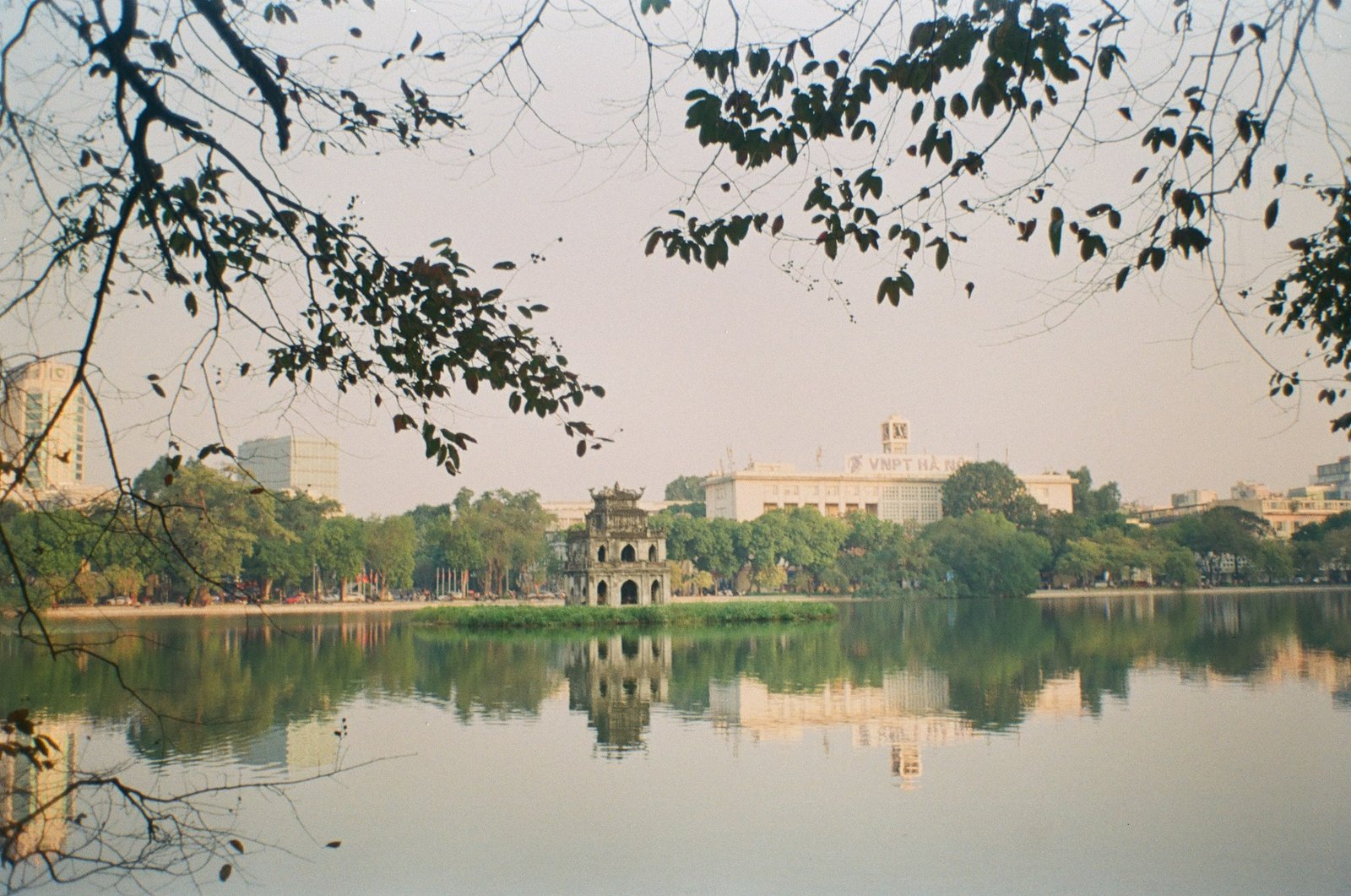
Hanoi is known for its beautiful lakes, historic buildings, and vibrant Old Quarter, expertly mixing old-world charm with modernity. It is an excellent place to experience authentic Vietnamese street food, with dishes like pho and bun cha. The city offers a captivating journey through Vietnam’s rich past and dynamic present. Hanoi provides a profound glimpse into Vietnam’s history through its well-preserved colonial architecture and significant landmarks like the Ho Chi Minh Mausoleum. The vibrant Old Quarter, with its labyrinthine streets, each traditionally dedicated to a specific trade, offers a captivating maze of cultural exploration.
The city is a quintessential hub for authentic Vietnamese street food, making it a key destination for the burgeoning food tourism trend. Dishes like the iconic pho and bun cha are readily available, offering a true taste of local life. Hanoi’s enduring appeal, especially through its Old Quarter and street food culture, lies in its ability to offer a deeply authentic and immersive experience.
This directly aligns with the broader 2025 travel trends where travelers increasingly seek unique, sustainable, and personalized experiences and a genuine connection with local life, rather than just visiting curated landmarks. The city’s continued appeal among global travelers is affirmed by its recognition as one of the best cities in Asia for 2025 by Travel + Leisure readers, ranking twelfth.
Ho Chi Minh City (Saigon), Vietnam: A Dynamic Hub of History and Life
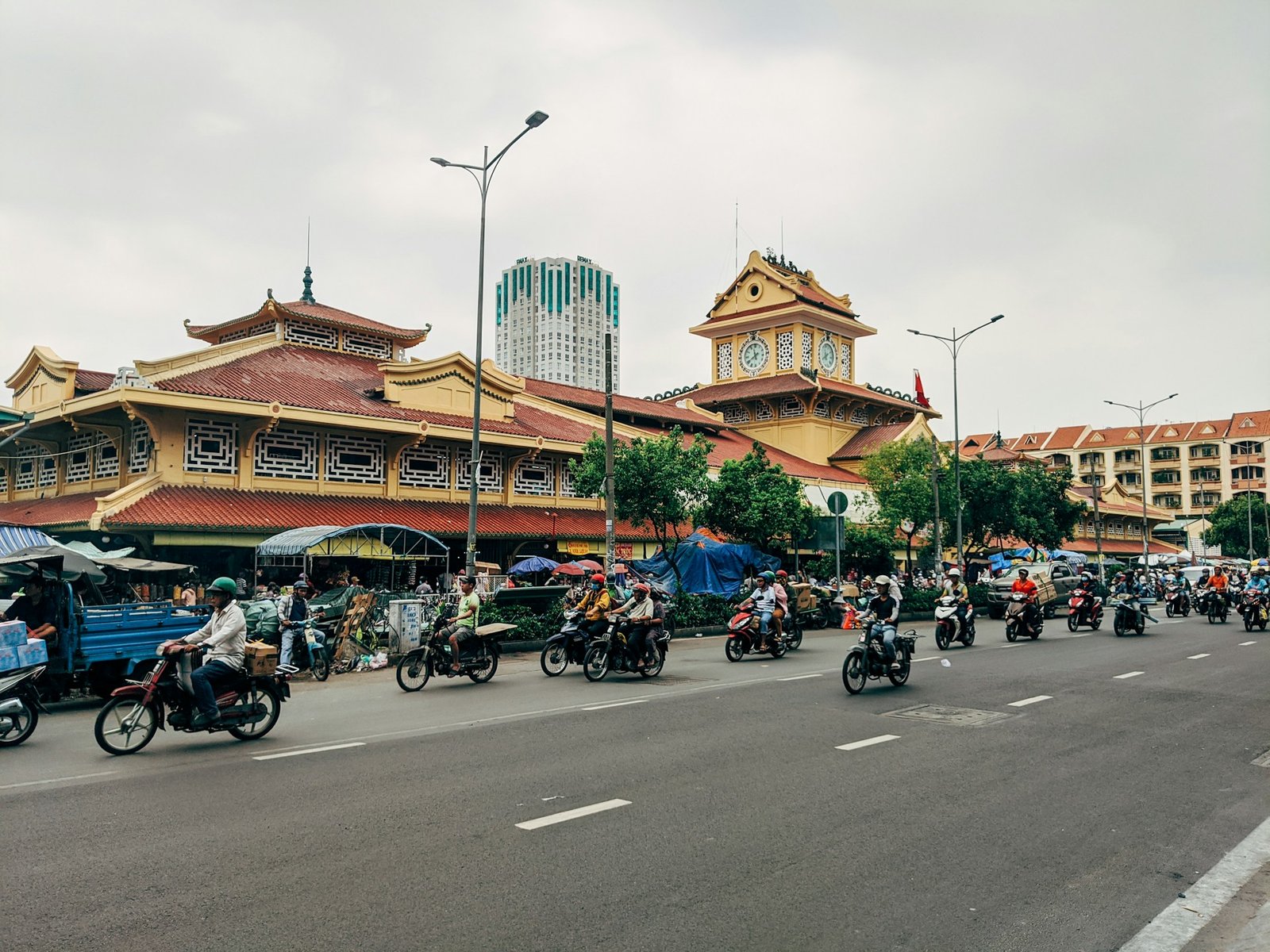
Ho Chi Minh City, formerly known as Saigon, is a bustling metropolis characterized by its rich history, vibrant street life, diverse food scene, and important landmarks such as the War Remnants Museum and Ben Thanh Market. It serves as a dynamic testament to Vietnam’s resilience and forward momentum. The year 2025 marks a profound milestone: the 50th anniversary of Vietnam’s reunification (April 30, 1975), signifying the end of the Vietnam War. Ho Chi Minh City is hosting significant celebrations and events to commemorate this pivotal moment.
These events, including large military parades and public gatherings, are occasions to honor “magnanimity, peace, reconciliation and healing” , offering a unique historical and cultural immersion for visitors in 2025. The explicit mention of the 50th anniversary provides a highly time-sensitive and profoundly culturally significant reason to visit Ho Chi Minh City. This is not merely a historical fact but a live, national event that will shape the visitor experience in 2025, offering an unparalleled opportunity for deep historical and cultural immersion.
The city’s energetic street life, from bustling markets to lively cafes, provides endless opportunities for exploration and engagement. Ho Chi Minh City also offers a rich and diverse food scene, contributing to Vietnam’s growing reputation as a food tourism destination. Key historical sites include the Independence Palace, where the war officially ended, and the War Remnants Museum, offering poignant insights into the conflict. Ben Thanh Market remains a central hub for local goods and culinary experiences.
Siem Reap, Cambodia: Gateway to Ancient Wonders
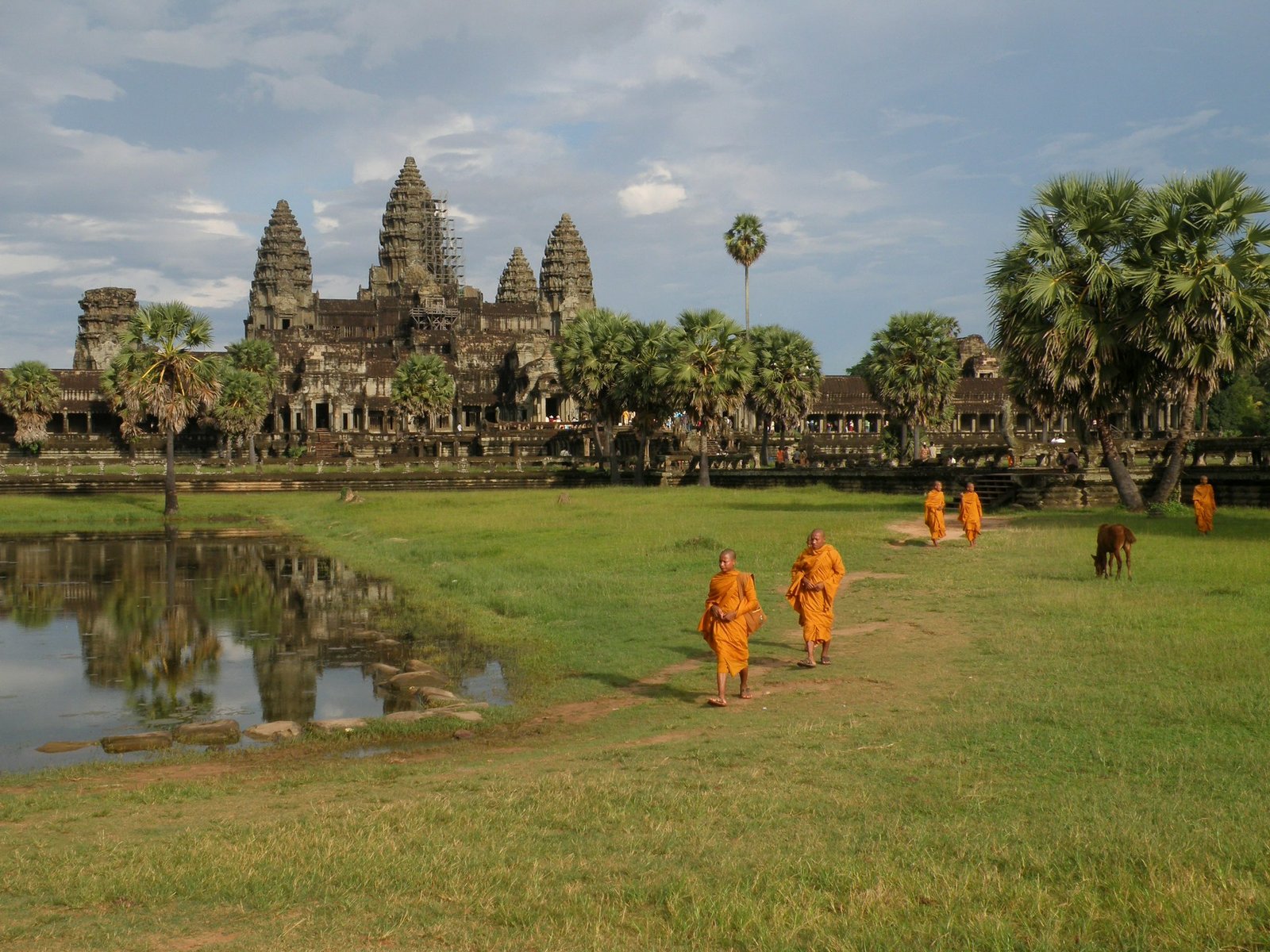
Siem Reap is synonymous with the magnificent Angkor Wat temple complex, a UNESCO World Heritage Site and the spiritual heart of Cambodia. It is an ideal destination for history enthusiasts and offers profound cultural experiences that extend beyond the ancient temples. The Angkor Wat complex is a global icon, making Siem Reap a primary destination for cultural and historical tourism, drawing millions of visitors annually to explore its intricate carvings and architectural grandeur.
Siem Reap’s tourism is overwhelmingly driven by the presence of this single, globally recognized, and historically profound landmark. This demonstrates how for certain destinations, a singular iconic cultural heritage site can be the dominant and indispensable factor in attracting a vast number of tourists, emphasizing the critical importance of preserving and promoting such sites for national tourism.
While Angkor Wat is the main draw, Siem Reap itself offers a vibrant local scene, traditional arts and crafts, and opportunities to explore contemporary Cambodian culture, including lively markets and performance venues. Siem Reap’s enduring appeal is highlighted by its ranking as the eighth-best city in Asia for 2025 by Travel + Leisure readers , underscoring its continued popularity and significance as a global cultural destination.
Chiang Mai, Thailand: The Cultural Heart of the North
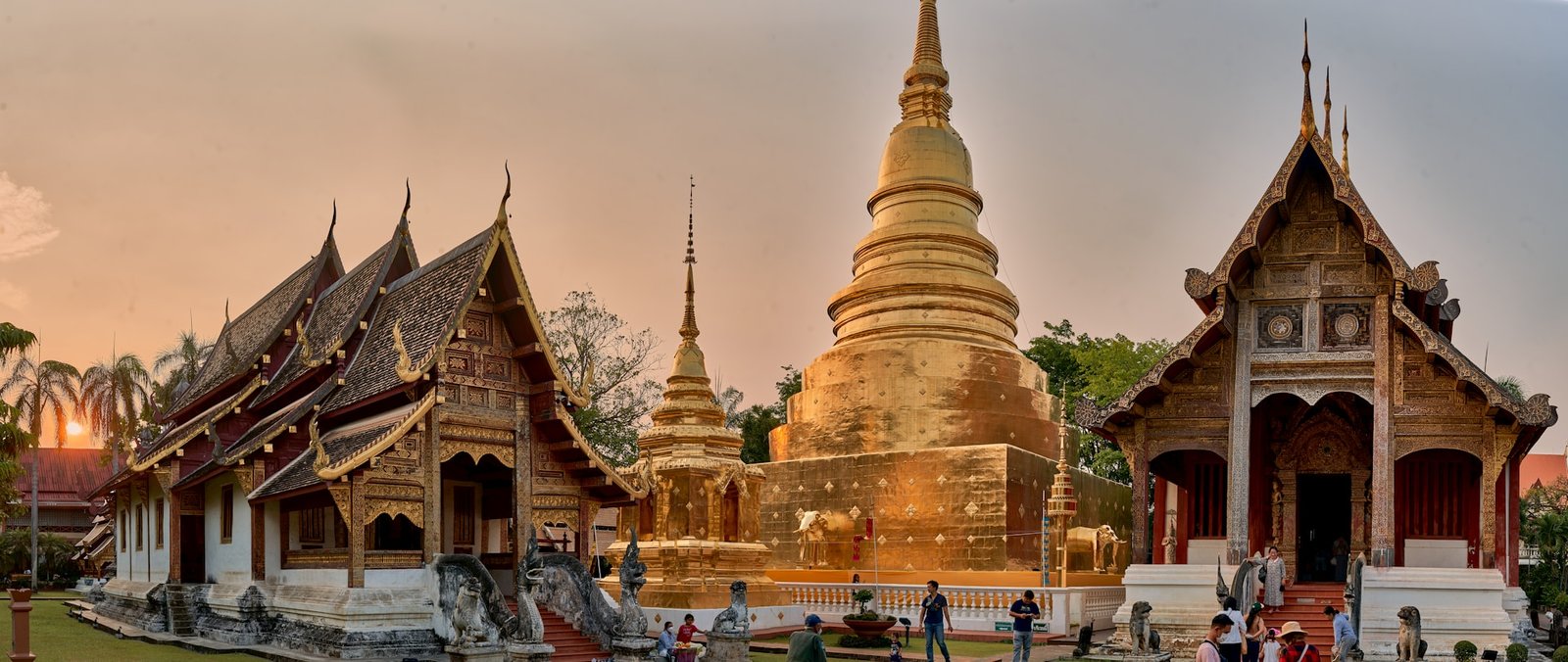
Chiang Mai stands as the cultural capital of Northern Thailand, celebrated for its ancient temples, traditional handicrafts, stunning mountain views, and a distinctly relaxed atmosphere. It is widely regarded as a great spot for both foodies and adventure lovers . The city’s appeal aligns with a growing trend among travelers who seek more than just sightseeing; they desire immersive cultural experiences, opportunities for personal well-being, and active engagement with nature. This shift towards experiential and wellness tourism is particularly evident in destinations like Chiang Mai, which offers a serene environment conducive to mindfulness and a rich tapestry of local traditions.
Chiang Mai’s ancient temples, such as Wat Phra That Doi Suthep, are central to its cultural identity, offering spiritual retreats and insights into Buddhist practices. Beyond its spiritual side, the city provides ample opportunities for adventure, including trekking and exploring stunning mountain landscapes . For culinary enthusiasts, Chiang Mai’s food scene, known for Northern Thai specialties, is a major draw. The city’s widespread popularity is further affirmed by Travel + Leisure readers, who voted Chiang Mai as the absolute best city in Asia for 2025. This top ranking highlights its unique blend of cultural authenticity, natural beauty, and a relaxed pace that resonates deeply with contemporary travelers.
Luang Prabang, Laos: A Serene Spiritual Retreat
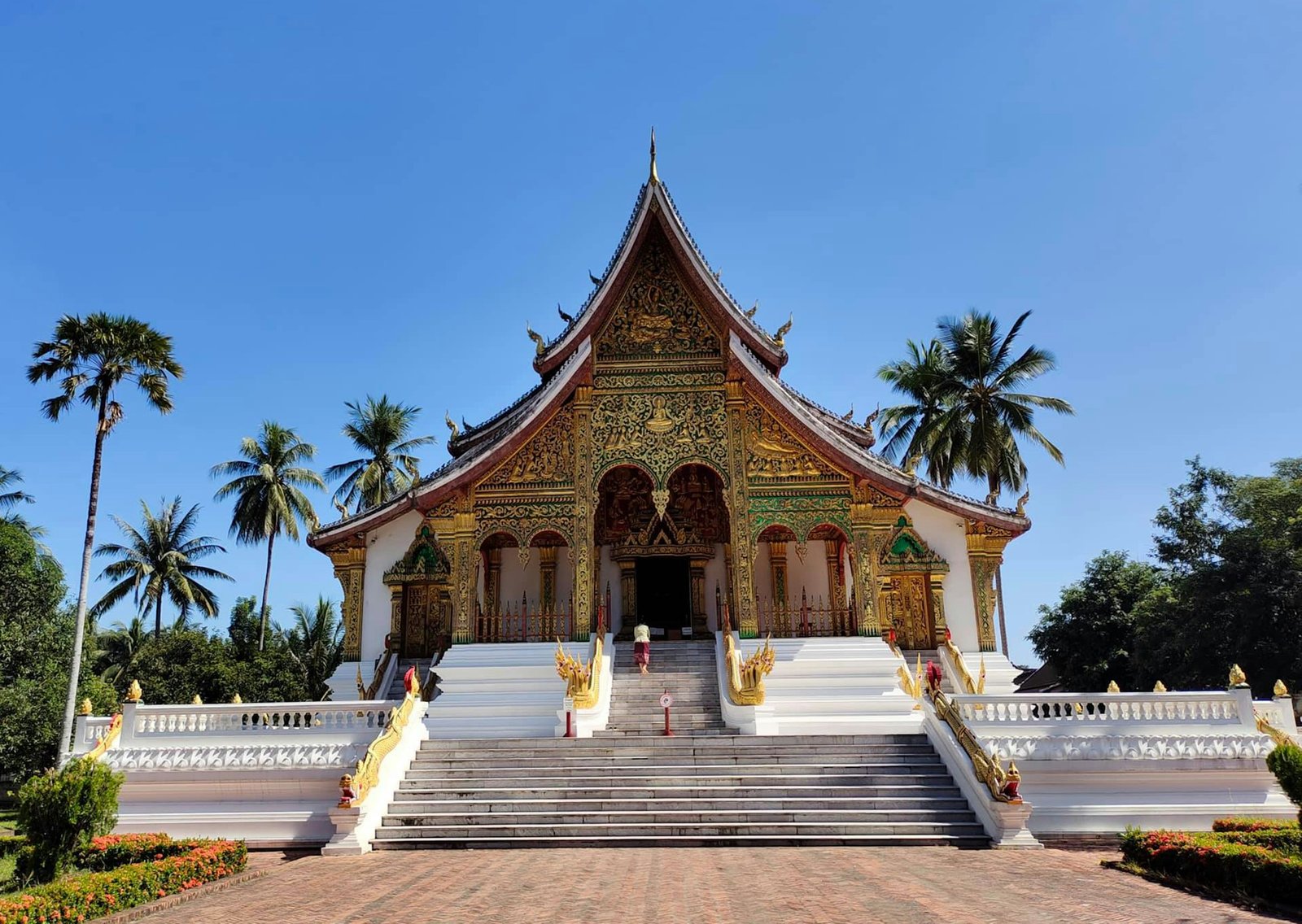
Luang Prabang is a peaceful and spiritual city nestled between mountains and rivers, characterized by its golden temples, French colonial architecture, vibrant night markets, and natural wonders like the Kuang Si Falls . This city embodies a profound sense of tranquility and cultural depth. Its appeal is particularly strong for those seeking wellness and healing travel, a trend gaining significant interest in Southeast Asia. Luang Prabang offers retreat packages that combine yoga, meditation, and traditional healing methods such as hot spring baths, providing visitors with opportunities to relax their minds, purify their bodies, and regenerate energy.
The city’s serene environment and focus on spiritual well-being demonstrate how niche tourism segments, specifically wellness and mindfulness, are increasingly driving growth in certain destinations. Luang Prabang’s unique blend of cultural heritage and natural beauty positions it as a prime location for travelers looking to disconnect from technology, practice mindfulness, and restore inner balance through programs at Buddhist monasteries. The golden temples, French colonial architecture, and natural wonders like the Kuang Si Falls offer a harmonious blend of cultural immersion and natural exploration, making it a truly unique destination for a calming and enriching travel experience .
Manila, Philippines: A City of Contrasts and Flavors
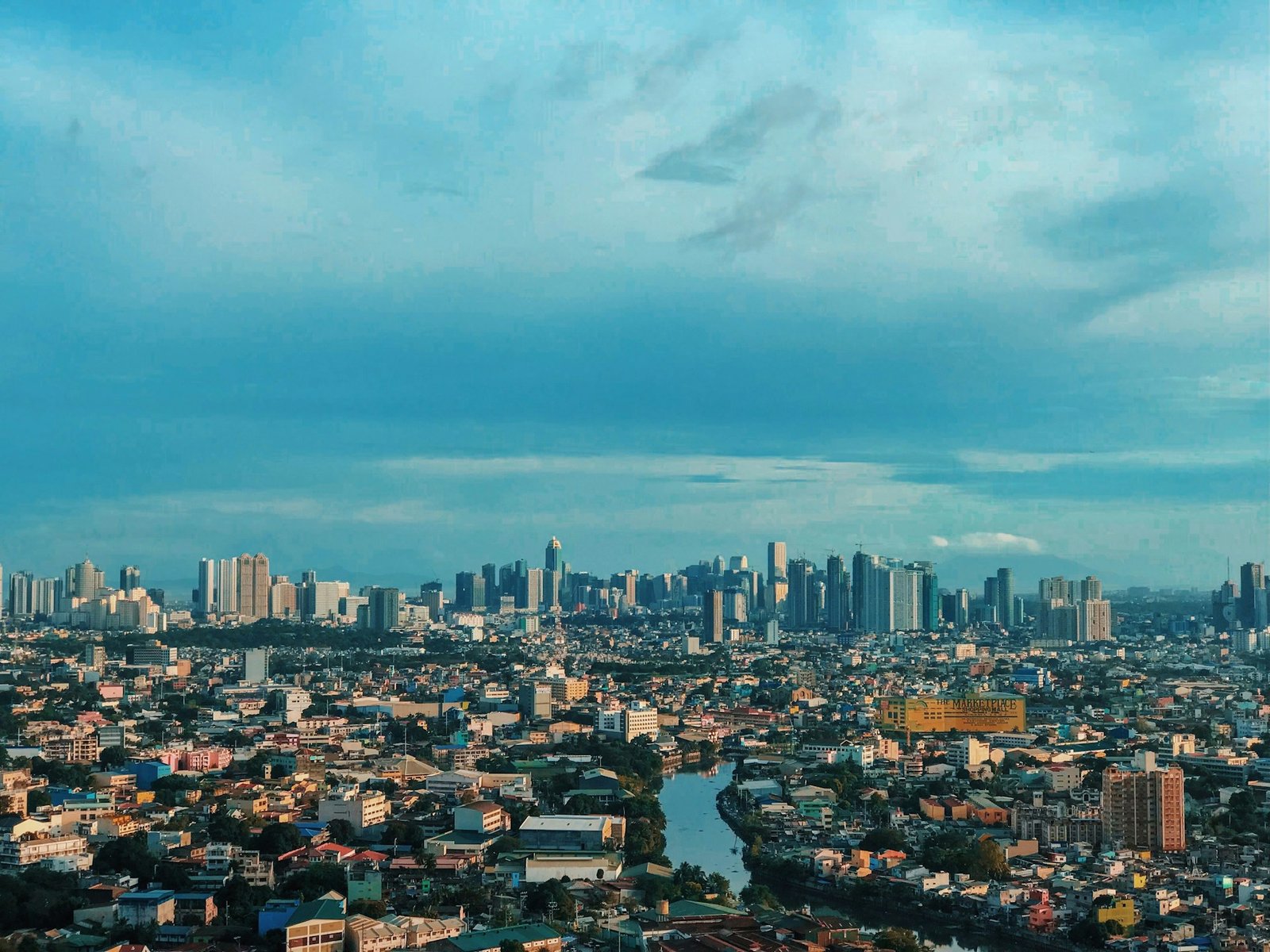
Manila, the dynamic capital of the Philippines, presents a fascinating blend of old Spanish colonial buildings, modern shopping malls, and proximity to sandy beaches . It boasts a rich history and a thriving food scene with unique Filipino flavors. While Manila itself offers a compelling urban experience, its strategic importance as a travel destination is significantly amplified by its role as a gateway to some of the Philippines’ most celebrated island destinations. This highlights how gateway cities can leverage the broader regional appeal of their country, serving as crucial entry points for travelers eager to explore beyond the urban core.
The city’s historical sites, such as Intramuros (the walled city), offer a glimpse into its colonial past, while its modern districts showcase its contemporary vibrancy . The thriving food scene, with its unique Filipino flavors, provides a distinct culinary adventure, from traditional dishes to contemporary fusion cuisine . Furthermore, Manila serves as a primary access point for travelers heading to world-renowned island destinations like Palawan and Boracay, which are consistently voted among Asia’s best islands. This dual appeal—a rich urban experience coupled with easy access to pristine natural wonders—makes Manila a compelling starting point for a comprehensive Philippine adventure.
Penang, Malaysia: Malaysia’s Culinary and Cultural Gem
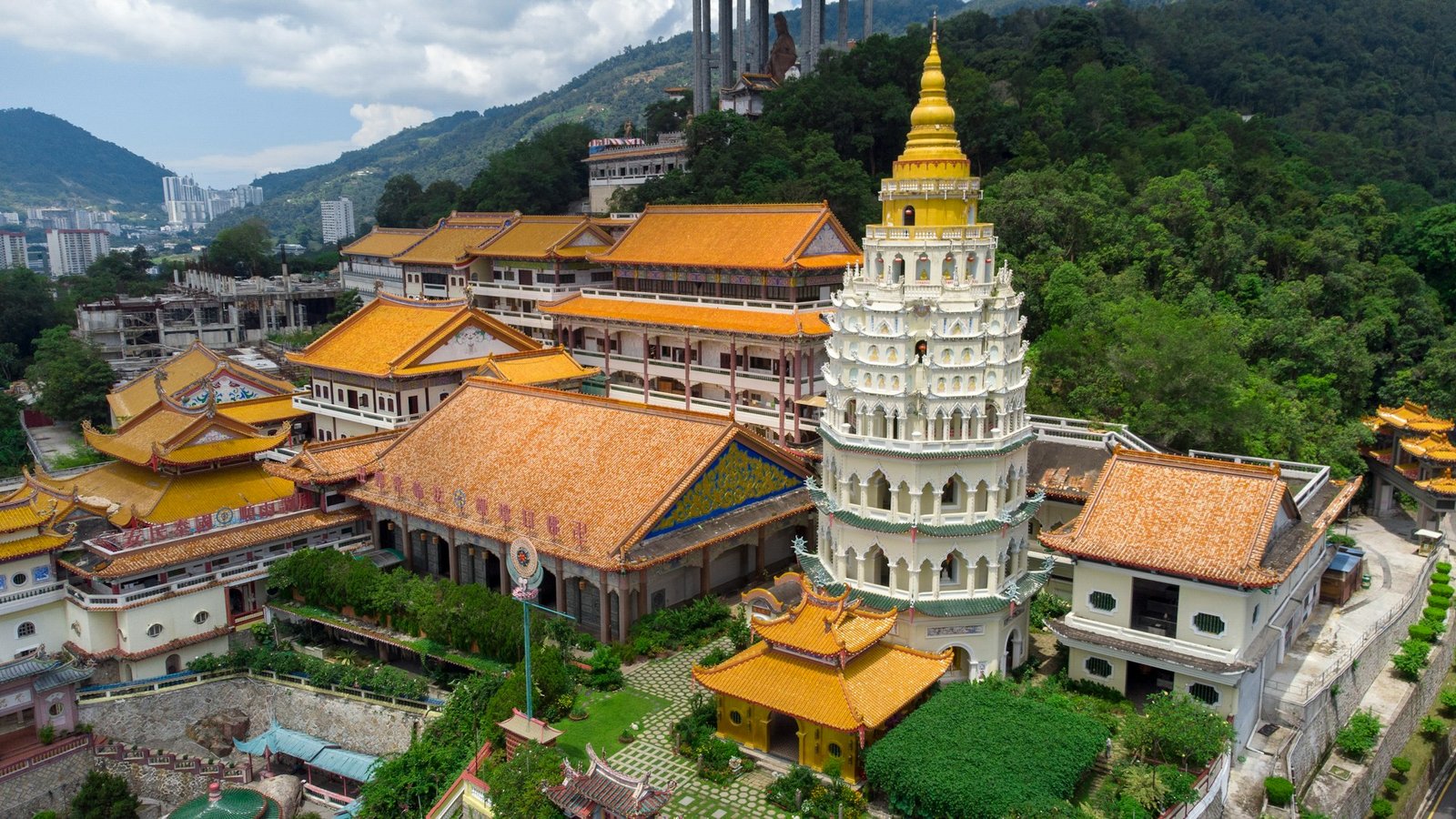
Penang, a Malaysian island city, is famous for its delicious street food, colorful street art, and UNESCO-listed places like Georgetown . It is widely known as the food capital of Malaysia, offering a unique blend of Malay, Chinese, and Indian flavors . Penang’s reputation as a food capital is well-deserved, with more hawker food stalls per square foot than perhaps any other place in the world. The island is a foodie’s dream, presenting a kaleidoscope of different food cultures and traditions, including Chinese, Indian, Malay, Mamak, and Nyonya cuisines. This specialized cultural and culinary appeal is a powerful tourism driver, attracting travelers specifically seeking authentic gastronomic experiences and a deep dive into local heritage.
Georgetown, the capital of Penang, is a UNESCO World Heritage Site, celebrated for its well-preserved colonial architecture and vibrant street art scene. Within Georgetown, areas like Chulia Street and Kimberley Street are bustling hubs for street food, with the latter being home to “The Four Heavenly Kings,” a collection of street food vendors recognized for their exceptional dishes. Whether it’s the famous Char Koay Teow or the refreshing Teochew Chendul, Penang offers an unparalleled culinary journey. The city’s unique blend of historical charm, artistic expression, and unparalleled food makes it an essential destination for cultural and culinary exploration in Southeast Asia.
Conclusion
Southeast Asia continues to be a dynamic and captivating region, offering an unparalleled array of experiences that cater to every type of traveler. The analysis of current trends and expert recommendations reveals that the top cities highlighted—from the bustling streets of Bangkok and Ho Chi Minh City to the cultural depths of Chiang Mai and Siem Reap, and the culinary delights of Singapore and Penang—each present compelling reasons for exploration in 2025. The region’s ability to seamlessly blend ancient traditions with modern innovation, coupled with proactive governmental policies like visa relaxations in Malaysia, is driving significant tourism growth and shaping new travel patterns.
The importance of delivering helpful, reliable, and people-first content cannot be overstated, particularly in the travel domain where decisions involve significant personal investment. Adhering to principles that foster experience, expertise, authoritativeness, and trustworthiness ensures that travel guides are not merely informative but also profoundly credible and responsible. The cities featured in this report exemplify the diverse and enriching experiences available across Southeast Asia, from tech-forward urban centers and historical landmarks to serene spiritual retreats and world-renowned culinary hubs. For those planning a journey, these ten cities offer a gateway to unforgettable adventures, deep cultural immersion, and a true taste of Southeast Asia’s enduring allure.
